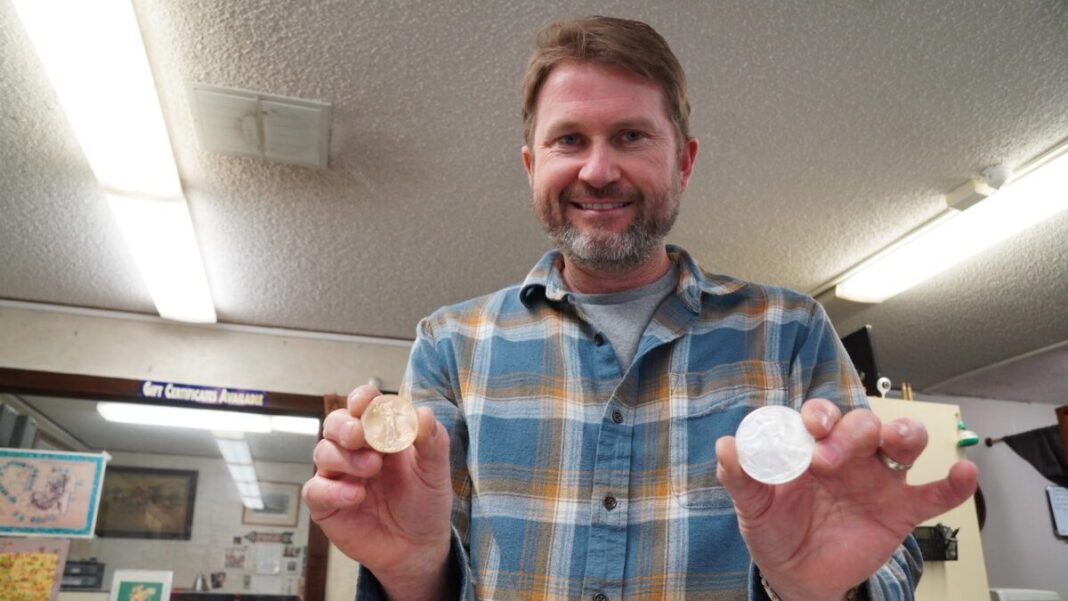Bullion shops see spike in interest following bank runs, SVB collapse
COTTONWOOD, Ariz.—Coin Heaven co-owner Gabe Wright saw precious metals demand rise to new heights during the pandemic, but nothing as spectacular as Silicon Valley Bank’s (SVB) collapse.
“It’s getting real,” Wright said, standing behind the glass showcase filled with various silver and gold bullion, coins, jewelry, and sterling in his busy Cottonwood, Arizona, shop on March 20.
“On a dime, it turned around—big time. It’s unprecedented,” he said. “We’ve seen the demand high, but not like this. Of course, SVB started this phase we’re in.”
And where the buying phase—more like a buying frenzy—ends up is anybody’s guess, Wright said.
Once regarded as a “barbarous relic” by the Wall Street financial sector, gold and silver are now in heavy demand to hedge against inflation and financial risk.
Wright said retail demand for precious metals could soon outstrip supply, and if more banks fail, to expect a full-blown “panic.”
He agreed that U.S. Treasury Secretary Janet Yellen didn’t help matters by not announcing a government bail-out for SVB after depositors withdrew $42 billion in early March, spurring the bank’s collapse.
The Federal Deposit Insurance Corporation (FDIC) insures depositor accounts up to $250,000.
Almost immediately after the run on SVB, people began buying gold and silver on the spot market, putting the squeeze on coin and bullion dealers large and small.
As of March 20, gold was on sale at $1,979 per troy ounce, and silver at $22.51 per ounce.
One troy ounce weighs 31.10 grams or 1.1 regular ounces.
Buy Low, Sell High
In November 2011, an ounce of gold rallied to a multi-year high of more than $2,000 while silver soared to almost $50 an ounce before the bull run on precious metals corrected to new lows.
By Allan Stein









